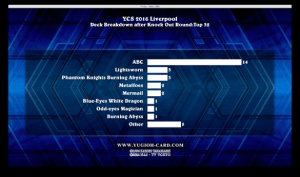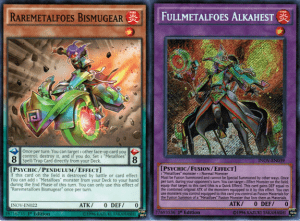This is our first collaborative article with Complexity Card Gaming!
State of the meta after the release of Invasion: Vengeance
Welcome guys, my name is Marcel Burri, former Runner-up at the European Championship and member of Complexity Card Gaming, the best Yu-Gi-Oh team in Europe.
Starting from today, me and my teammates will be providing weekly content for YGOrganization. In my role, I will be discussing the state of meta game, as well as providing analysis on recent premier events.
For my first article I will take a closer look at the current meta, a bit more than one month after the release of Invasion: Vengeance. Four weekends of dueling have passed and it’s a good moment to take a look at the state of the game.
Welcome to my first article about the state of the current TCG meta. It’s been a bit more than a month since Invasion: Vengeance was released and four weekends of dueling have passed. A good moment to take a look whereto the meta has evolved so far. This may also help a little to prepare for the last bigger tournaments that are coming up this year: YCS Bochum, ARG Circuit Series Richmond and Orlando as well as the CCG Grand Final in Amsterdam.
As I’m European this analysis may be overstated a bit by the European meta but I don’t think the difference between Europe, North America, Central America, South America or any Oceanic TCG areas should be that huge. The biggest tournaments of all areas will be covered in this article, so we will have some influences from all different regions.
State of the meta before INOV
Invasion: Vengeance was officially released on November 3 (respectively one day later for North America), so to start things off we should have a quick look how the meta looked before its release.
After the Continental Championships 5 YCS’s were held before the release of INOV. If we have a look at these we will get a good picture about the meta. On August 27/28 the first two were held in Toronto respectively Rimini. This tournaments don’t really matter for our overview post INOV later since it still used the old April list. But let’s have a quick look anyway: If we add up all Top 8 deck lists we have:
2 Fire King Kozmo
4 Pendulum variants (Odd-Eyes/Magician/Dracoslayer/Performapal)
3 Domain Monarchs
3 XYZ Monarchs
4 Phantom Knight Burning Abyss (PKBA)
PKBA was able to take down YCS Toronto while Fire King Kozmo won in Rimini.
On August 29 the new list was released which was used for YCS Mexico City on The next on September 17/18 and YCS Minneapolis on October 15/16. With Monarchs, Burning Abyss, Kozmo and Pendulum all hit by the list, Metalfoes were successful at both of those events. But it only represented 20 % of the decks in the top cut. A bit surprisingly for many players, Blue-Eyes was the most successful deck in this regard with 27,5 %.
Things get much more interesting and accurate with the last YCS held on October 29/30 in Liverpool. The reason is because the Structure Deck: Seto Kaiba which was released on October 20 was legal for this event. ABC was a big competitor in the OCG after its release and most players expected it to perform strong in the TCG as well. If we have a look at the official Top 32 deck breakdown we definitively see they were right:
In the end ABC showed some weakness, only 1 of the Top 4 competitors was running this arch type and the event was won by Thomas Roses 50-card PKBA deck that was heavily teched against ABC by maining cards like Ghost Reaper & Winter Cherries or Chaos Hunter.
The meta-impacting cards in Invasion: Vengeance
With that brief look at what was going on until November we can jump into our analysis what happened after. To do that we should first look at the most ground-breaking cards released in INOV.
The Metalfoes “package”
We already saw Metalfoes performing very well the last few tournaments but things could just get better for them with the new support they would get.
First there is Raremetalfoes Bismugear, which is another high scale for the deck. This is already pretty solid on its own since the deck would become way more stable with just having access to more Pendulum Monsters. On top of that it has a second effect that comes in very handy as well, mostly in combination with the new Fullmetalfoes Fusion. If Bismugear is destroyed, it lets you search another Metalfoes in your End Phase. As you often end with only a single Metalfoes monster on the field this is very important because it makes your Fullmetalfoes Fusion alive during your opponents turn after you set it with one of your Metalfoes Scales.
The new Fusion Spell together with Fullmetalfoes Alkahest also acts as a built-in part of the engine that can serve as protection during your opponents turn. Therefore the deck doesn’t really need to play (m)any traps and can purely focus on running engine cards and focus on Pendulum and Fusion Summoning.
Last but not least they also got the strongest Fusion Monster: Metalfoes Mithrilium. Many people heavily underestimated this card at first and were more hyped about Alkahest, but this card actually enables a lot more combos, makes sure you have more resources to play in one turn and recycles your Spell/Traps back to your deck.
After the first weeks people more and more started playing 2 instead of only 1 Fullmetalfoes Fusion. The reason were some interactions you could have during your opponents turn including your Mithrilium. With a hand of 4 Metalfoes monsters, where one of them is Bismugear and at least one is a low Scale you could Pendulum summon, fuse for Mithrilum and in an optimal scenario end with 2 Fullmetalfoes Fusion + Combination face down. In your end Phase you would get to search another Metalfoes monster. During your opponents turn you can use the first Fullmetalfoes Fusion to summon Orichalc while Mithrilium summons any Metalfoes from your Graveyard or Extra Deck and Combination revives the Mithrilium you just fused. The second Fusion afterwards can make sure you can use your Orichalc’s destruction effect whenever you want and also summon any Metalfoes monster you like (usually Alkahest to disrupt your opponents turn even more).
But this is just one of the thing Mithrilium enabled, of course there are a lot more interactions with the card. Overall the four new cards rounded up the Metalfoes quite well and made it a very strong competitor for the upcoming format.
Toadally Awesome
The two toad companions are probably the cutest card of the set. But as cards like Rescue Cat already taught us, cute cards can be as strong, to be honest it’s probably the strongest card of the set on its own.
The card was just reason enough to single-handedly bring back old cards like Swap Frog and Dupe Frog back into the meta as they could now be overlaid to this amazing new XYZ monster. But there is a secondary option to summon this card, which is Bahamut Shark. When summoned by Bahamut Shark it wouldn’t get all his three effects, but the two most relevant ones would still be active: Negation and Recycling.
The reason why this card is so strong is because it’s almost impossible for your opponent to kill without losing any resources. The only way to kill it off without much trouble is if you can just run over it without activating any effect before. Getting a monster with more than 2200 ATK on the field may not sound that hard, but if you can’t use any effect to accomplish that thing get much harder. And this is only the scenario when it’s summoned by Bahamut Shark. In Frog decks it’s almost impossible to kill it this way since during your opponents Standby Phase you can detach a material and summon a Dupe Frog which protects your Toad.
Kaijus are also a sub-par solution for Toad. Usually summoning a monster with a built-in negation effect is using up multiple resources. The most popular examples are probably Cyber Dragon Infinity and Number 38: Hope Harbinger Dragon Titanic Galaxy. If your opponent has a Kaiju for those monster it usually hurts a lot since they are just gone. Toad is different: In this scenario he will still activate his recycling effect and you can add back a WATER monster from your Graveyard. This will usually help to build a new Toad on your next turn or do another big play.
With all those strengths it’s probably not a big surprise we saw a raise of Frogs, Hero or Mermail decks in the tournament scene since they had access to this strong card.
Paleozoic
Speaking about Frogs having their comeback in this meta: Let’s introduce the Paleozoic arch type which is usually coming along with those amphibians. The Paleozoic arch type was originally introduced in Korea in CORE and DOCS a long time before they found their way to the OCG and later to the TCG.
They have 2 XYZ monsters and 8 Trap cards which were released in TDIL and INOV in the TCG. Even if the arch type is Trap-based and Paleozoic-Frog decks usually run 25+ Trap cards (at least in the TCG, the OCG had versions with less Trap cards which included normal LV2 Aqua type monsters like Slime Frog together with Rescue Rabbit, which is unlimited in the OCG, and Unexpected Dai). But the deck isn’t always forced to play like a Trap deck thanks to Paleozoic Opabinia. This little XYZ monster is the key element for the success of the deck. And as strong as Toadally Awesome is, most players agree that this is by far the most important Extra deck monster. Once you get our your first Opabinia (Usually with 1 Paleozoic Trap and 1 Frog monster or Ronintoadin) your engine gets going. Being able to activate the Paleozoic Traps from your hand massively accelerates your deck and makes it easy to summon Toadally Awesome in the same turn as Opabinia anyway. And once those two cards are set up things usually snowball out of control for your opponent very fast and they have no chance to ever come back again.
Dimensional Barrier
The new cards we discussed so far are limited to a certain arch types or a limited number of decks. The one staple card in this set that is played in most decks is a Trap card: Dimensional Barrier. Trap cards weren’t too popular for quite a while since they are just much slower than Monsters and Spell cards. Solemn Strike and now Dimensional Barrier were able to break this habit in a lot of decks since their impact was so powerful that it was worth to wait one turn to activate them because of their disruptive effects.
If we take a short look at the OCG before the whole Zoodiac cards were released we saw a slow takeover of Dimensional Barrier over Solemn Strike. If decks had to decide to run only one of those Traps, Barrier usually were preferred. This has different reasons:
First, Dimensional Barrier still has its value when your opponent tries to destroy it. This was even more important in the OCG than the TCG because Harpie’s Feather Duster is still legal besides that all-around Twin Twisters.
Second, in a meta where every deck (maybe except Darklords) is reliant on the extra deck it will always have its value and should never be a dead card.
Third, it has an absolute blow-out potential in certain match-ups when you have it at the right time. A Pendulum deck fully relying on its Pendulum summon can easily lose to a well-timed Barrier. Burning Abyss always struggled with Flying “C” which made it impossible to XYZ summon. Barrier accomplishes the same but can’t be tributed away, suicided or anything like that. And of course there are much more examples.
Notable Mentions
There were some other interesting cards in the set as well which are seen occasionally. Pot of Acquisitiveness is used as another potential Side deck cards against ABC. If they tag our their ABC Buster Dragon and you chain Pot you can bring yourself in a very good spot.
Vermillion Dragon Mech is a generic LV9 Synchro that only needs 2 materials and has a decent effect. It already found its space in the Metalfoes Extra deck where it enables certain combos with Gofu, Goldriver and Combination or is simply used to out problematic cards such as Anti-Spell Fragrance.
Denglong, First of the Yang Zing is besides Toadally Awesome the strongest single-card in this set. In opposite of the Toad, Denglong requires much more commitment in terms of deck-building to get the full potential out of him. And since he is usually used in very combo-heavy decks, they are weaker than other decks if going second and generally have more weaknesses. So overall, decks like Yang-Zing Metalfoes or Omega-Handloop can abuse the cards to an absurd level but just don’t reach the consistency to compete at the highest level tournaments so far.
The last card that has already seen play in the current meta is Graydle Slime Jr. It’s another Aqua type LV2 monster and can be included in Paleozoic Frog decks. But it’s definitively not a staple card that has to be played in every deck.
The post-INOV meta
To get a closer picture about the meta I had a look at 9 tournaments hold during the first month after the release. You can check them out down below.
This gives us the following meta breakdown:
Deck Number of Tops Number of Wins
ABC 43 5
Metalfoes 31 4
Yang Zing Metalfoes 2
PKBA 3
Palezoic Frogs 11
Mermail 8
Heroes 7
Lightsworn / Minerva Turbo 4
Dark Magician 1
Shiranui 1
Blue-Eyes 6
Kozmo 1
Darklords 2
We can see that ABC and Metalfoes are clearly the most popular and dominant decks, not only in terms of how often they were played but also how many tournaments they won. The included tournaments were all won by either one of those decks.
If we go through the month step by step we can see small adjustments and new variants of the decks.
Things kicked off at ARG Circuit Series Atlanta the weekend right after the release of INOV. The meta wasn’t defined yet and nobody could perfectly predict what would happen. Most players still were afraid the most of ABC and teched their decks to beat that arch type. Metalfoes flew a bit under the radar at this point and suddenly the final was a Metalfoes mirror match. The 1st place list of Mark Myatt was a bit different to what would be played later during the format: He used the Ariadne/Counter Trap engine and played multiple copies of Metalfoes Counter. He also cut the Fusion monsters in his Extra deck to the absolute minimum, something that should change as well.
1st Place, Mark Myatt, ARG Atlanta 2016, Metalfoes
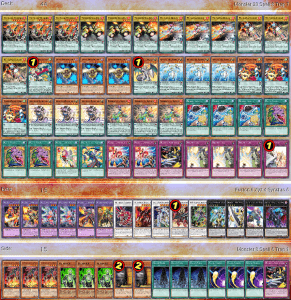
One week later Galileo de Obaldia was successful in Rio de Janeiro with his fairly standard build of ABC. Some notable thing were the cut of the third C-Crush Wyvern and the inclusion of Instant Fusion and Rafflesia. Instant Fusion can often help going second by summoning an XYZ monster before ABC Dragon Buster to hopefully escort him safely to the battlefield. If you’re going first it can be used as an additional defensive cards in form of Rafflesia to disrupt your opponents plays. The versatility of the card overall is really high and it would be included in many of the ABC lists during this format.
In the US several Regionals took place. St. Louis and San Antonio were won by Metalfoes while Empowerment ABC was successful in Spartanburg.
1st Place, Galileo de Obaldia, YCS Rio de Janeiro, ABC
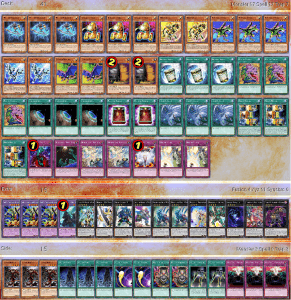
Another weekend in the books and Destiny Soldiers and the Darklords were released as well. A lot of players would respect that fact and change their side decks accordingly. This mostly meant the inclusion of Raigeki and Dark Hole(s) as especially the boards with Vanity’s Fiend and Archlord Kristya were terrifying. The biggest event of this weekend was ARG Circuit Series Charlotte. Blair Hunter piloted his deck to another victory after already being successful with it the weekend before at a Regionals.
His deck is a mostly standard Rank 4 based one with the inclusion of Empowerment and Dragodies, the Empowered Warrior. This mini-engine was supposed to solve some issues with multiple Field Spells respectively Terraforming. Empowerment could make sure they were still alive by turning them into a level 4 monster that could be used as an XYZ material.
More Regionals took place and Paleozoic Frogs became much more popular. A lot of players topped with them and e.g. in Kissimme and Pearl they went all the way through to victory.
1st Place, Blair Hunter, ARG Charlotte, Empowerment ABC
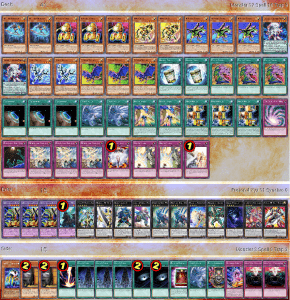
After around a month the meta had settled a bit and it was time for YCS Anaheim. The Top 32 looked as follows:
9 ABC
7 Metalfoes
5 Paleozoics
3 Mermail
3 Heroes
2 Yang Zing/Metalfoes
2 Darklords
1 Blue-Eyes
After 14 rounds of action suddenly Paleozoic stood out at the top, in the Top 4 the deck was represented twice while ABC and Metalfoes scored one slot each. But in the end it was not quite enough to achieve the big victory and Elvis Vus Brilliant ABC deck was the most successful one of the weekend.
His deck was not quite common. Brilliant Fusion adds up some versatility to the deck. With a strong hand it can extend your plays a lot by having access to an additional normal summon. But the card can also be solid for a mediocre hand without Union Hangar or Terraforming. With two normal summons and the built-in Foolish Burial-like effect of Brilliant some hands can summon ABC Dragon Buster even without Hangar, something that is almost impossible for a standard Rank 4 based version. Of course your field would be much weaker than with a Hangar + Thrasher/Gadget/etc. opening but ABC Dragon Buster is often good enough on its own to win games.
The Paleozoic decks offer a lot of space for innovation. Almost all decks I’ve seen play 8 Frogs (including the two Ronintoadins). Most TCG lists run Pot of Desires over Card of Demise. The drawback of Demise is something that shouldn’t be underestimated. And in a game-state where your opponent takes a slower approach and doesn’t trade away your resources you won’t even have enough space to set all cards that were drawn, a problem you never have with Desires. An interesting thing is that a lot of players cut down Paleozoic Pikaia (the D-Draw one) to one or two copies. As strong the card sounds as weird it can become. Sometimes you are forced to keep another good, defensive Trap in your hand just to activate it and reduce the number of usable Trap cards to disrupt your opponents plays. Instead players run more copies of Marrella (the Foolish Burial one) and Paleozoic Leanochilia (the Omega one) which should always be alive and work well with Opabinia.
1st Place, Elvis Vu, YCS Anaheim 2016, Brilliant ABC
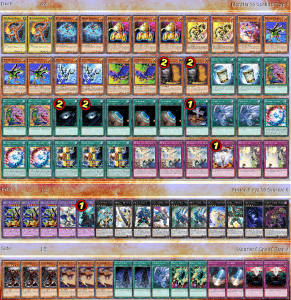
2nd Place, Michael State, YCS Anaheim 2016, Paleozoic Frogs

4th Place, Esala Wathathantridge, YCS Anaheim 2016, Metalfoes
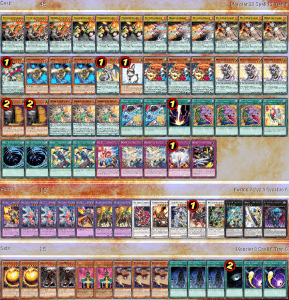
Top 8, John Sacopla, YCS Anaheim 2016, Heroes
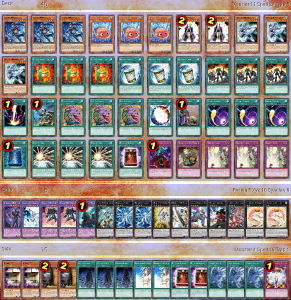
Top 8, Anh Duy Vo Nguyen, YCS Anaheim 2016, Atlantean Mermail Frogs
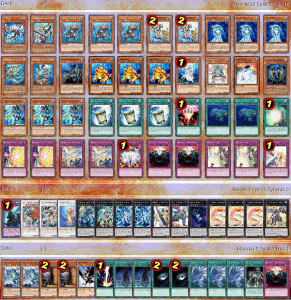
That’s it for the very first article about the TCG meta game. I hope you enjoyed it and will tune in the next time as well. Please feel free to leave any comments about what you liked or disliked and what I should change in the future. Please, also feel free to check out Complexity Card Gaming on Facebook, and follow my ongoing article series on our own website.
– Marcel Burri.

